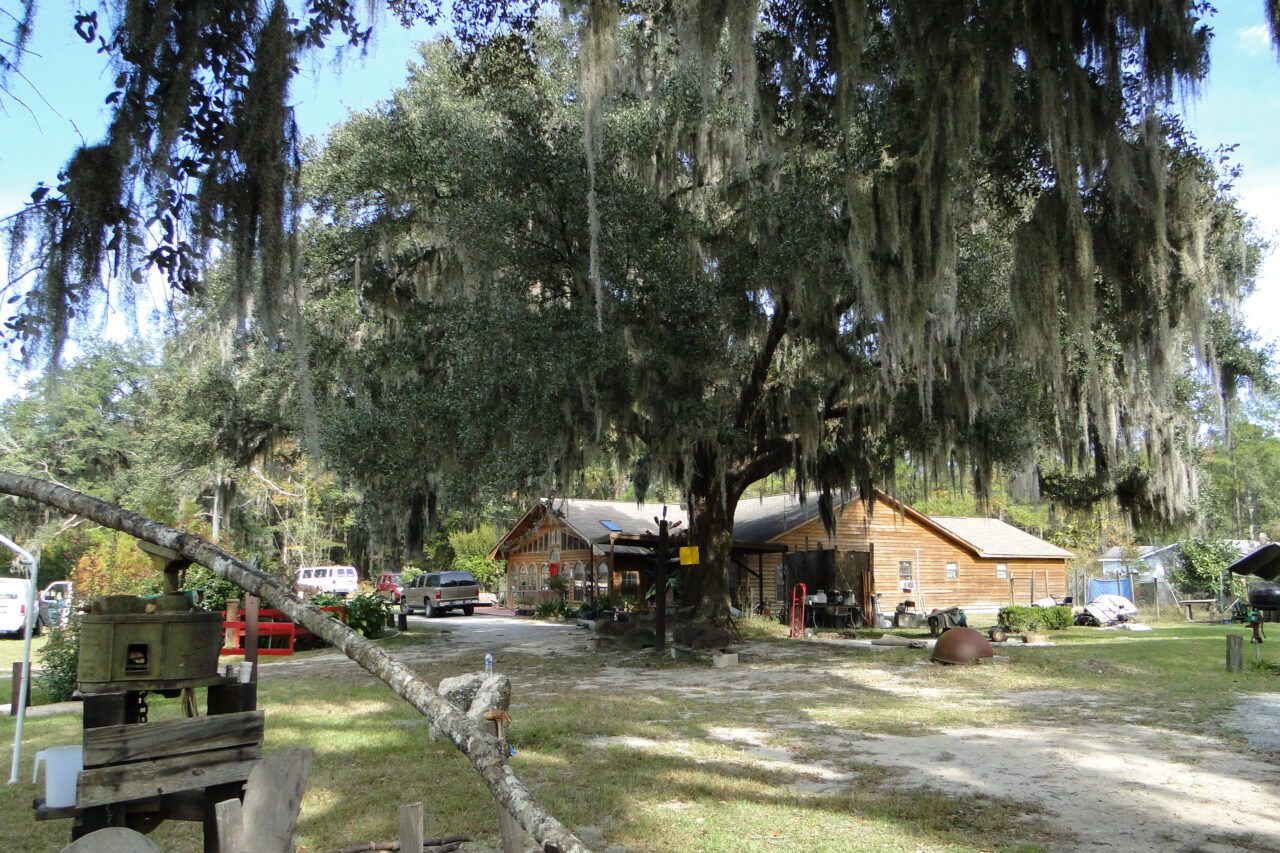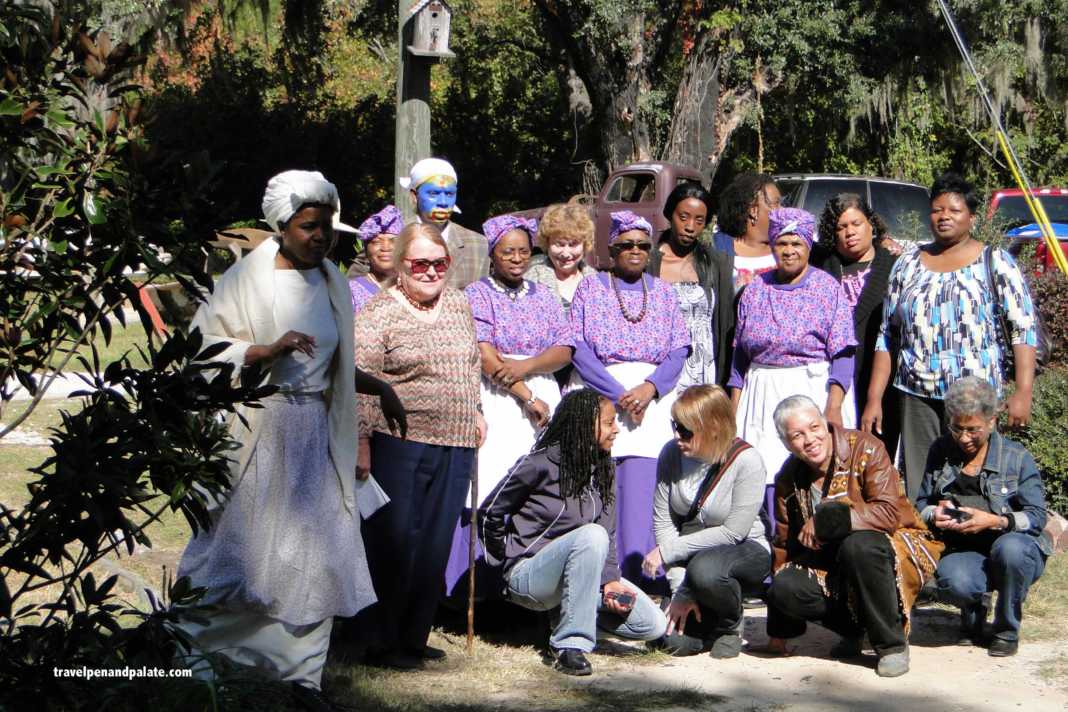To the Gullah Geechee, “Herbs are the feel good in food.” Pat Bacote, co-founder, Geechee Kunda Cultural Center

“De buckruh dey duh ‘ood duh hunt tuckrey.” Incorrect English? No, that is Gullah, “The white man is in the woods hunting turkeys.” Gullah is the hybrid language captives from West Africa developed after being transported as slaves to the rice plantations in the English colonies in the Carolinas, Georgia and, finally, Florida. Gullah deep fried turkey is a Southern classic.
The productive plantations in what is collectively known as the Low Country and the Sea Islands brought vast wealth to their largely absentee white owners. The absence of owners allowed slave families to maintain some semblance of traditional life from the culturally rich African lands they were forced to leave. Over the years the Gullah Geechee developed a distinct patois and greatly influenced what came to be known as classic Southern cuisine.
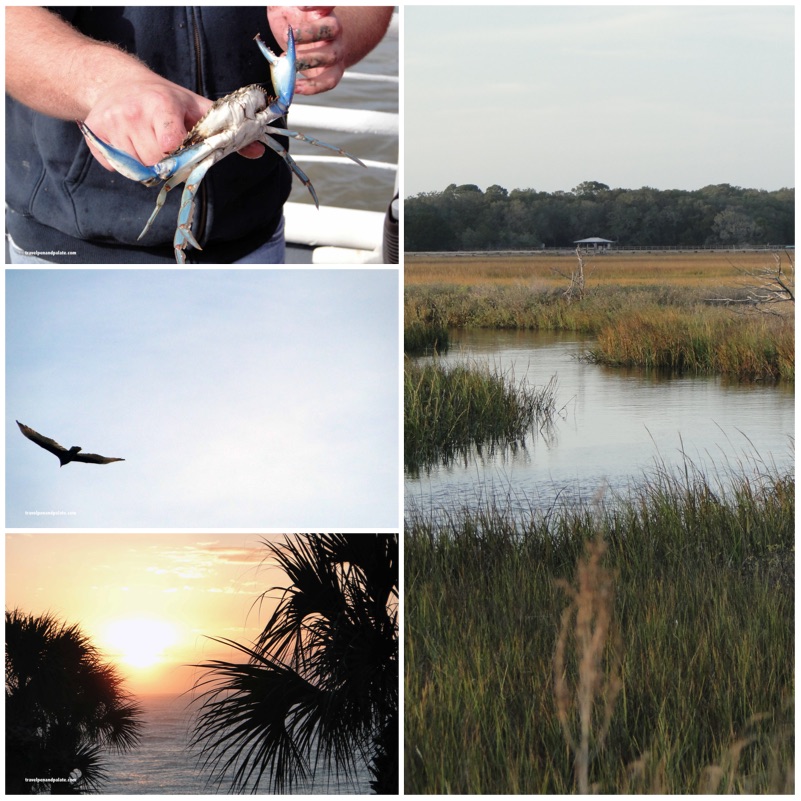
Culinary history is peppered with backstories that illustrate the reality of regional recipes. The 18th century expulsion of French Acadians to Louisiana resulted in the Cajun patois and cuisine. The millenniums old Spice Route influenced cuisines and mixed populations from Asia through Spain, and the 1920s Exchange of Populations uprooting thousands in Greece and Turkey cemented regional variations as Greek into everyday life – the Ottoman Empire/Turkish gyro for example.
The Gullah Geechee Cultural Heritage Corridor extends from Wilmington, North Carolina in the north to Jacksonville, Florida in the south. The National Heritage Area includes roughly 80 barrier islands and adjacent coastal counties that define the United States Low Country. The Heritage Corridor is home to the Gullah of the Carolinas and the Geechee in Georgia and Florida.
Just a few miles inland from the Georgia islands of St. Simons and Jekyll – where many pre-Civil War plantations existed – is the village of Riceboro and the Geechee Kunda Cultural Center, founded by Philadelphia transplants Jim and Pat Bacote. Jim explained that the center is more than a repository of the past.
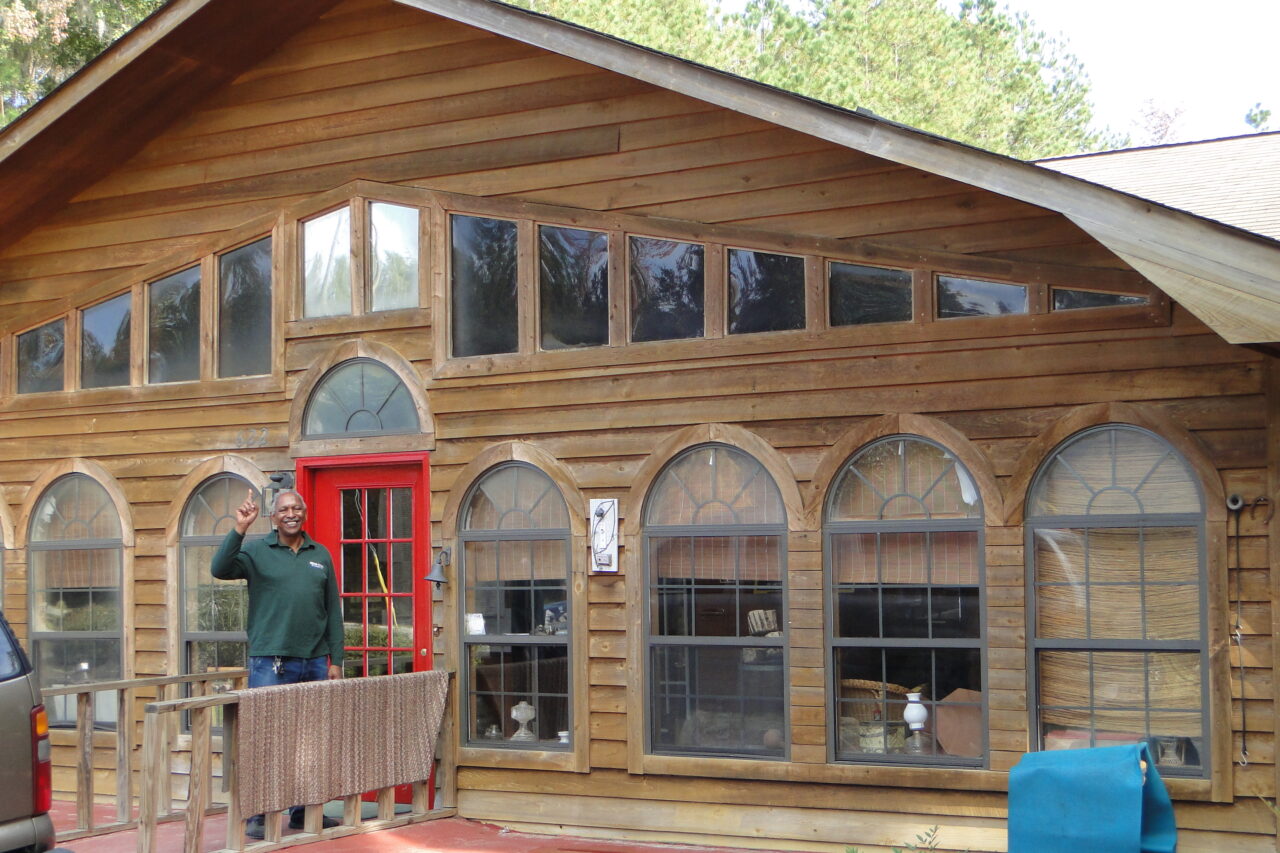
“We use culture as a vehicle for mental empowerment, intellectual liberation and spiritual healing.” Jim, who passed away in 2018, was a believer in Pan-Africanism. He told me that the mission of the Center was primarily educational to “find the common thread among African people.”
Events range from the post Thanksgiving Sugar Cane Grinding Festival to presentations of traditional West African music, dance and art. The Center and gallery’s permanent display is impressive.
On the grounds of the Center are large, traditional and fully functional kitchen equipment including a 19th century human powered sugar cane grinding machine and huge pots for reducing the sugar cane juice into syrup. A thatched roof African roundhouse serves as a gift shop.

Having seen numerous roundhouses on a press tour of Zimbabwe I was curious to understand the reason behind the design. Jim explained that it was both esthetic and practical. The circle is a universal spiritual symbol, but in hot climates, with judicious placement of windows and openings, it aids in maximizing the cooling breeze.
Gullah Geechee Cuisine
Grits, collard greens, peanuts, smoked pork, beef and chicken, beans and rice are just some of the foods Americans associate with traditional southern cuisine, yet they were all introduced by the Gullah Geechee people. They are part of traditional West African cuisine. As a chef and food writer on a press tour of southern Georgia, I was most interested in discovering African culinary connections. It was no more difficult than the food placed on the tables in front of me.
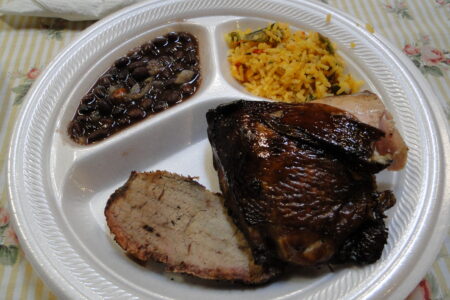
Pat Bacote said, “herbs are the feel good in food,” and I couldn’t agree more. The steamed rice was fragrant with basil, garlic, nutmeg, salt, pepper and turmeric, which gave it a beautiful yellow orange hue. The black beans were studded with fresh parsley and the wood smoked beef and chicken from the outdoors barbecue were tender and mahogany brown.
Meals for large gatherings were feasts created with readily available foods. Whether just a snack or a one-dish “buffet,” the following recipes tell backstories of the Gullah Geechee, and “feel good.”
Boiled Peanuts
Peanuts were first cultivated by the native cultures of South and Central America and introduced to Africa by the Spanish and Portuguese. Enslaved Africans brought the legume to the English colonies of the Sea Islands and Low Country of the Carolinas and Georgia.
I’d never had boiled peanuts and yet this traditional snack is found in elegant Southern restaurants and truck stops. They’re easy to prepare and go great with cold beer.

Green raw peanuts (not roasted) are available many places in the South and on-line if in other areas of the country.
Ingredients:
- 4 to 5 pounds green (raw) peanuts in shell
- 4 to 6 quarts water
- 1 cup plain salt per gallon of water
Preparation:
- Wash unshelled peanuts thoroughly in cold water until water runs clear (removing loose soil and sprouts, stems, weeds and leaves)
- Soak in cool, clean water for approximately 30 minutes before cooking.
- In a large heavy pot, place drained soaked peanuts and cover with water. Add enough water to cover the peanuts by 2 inches or more.
- Add 1 cup of salt per gallon of water used. (Other spices such as shrimp or crab boil or Old Bay Seasoning may be added at this point, if desired).
- Bring water to a boil and then reduce the heat and let the peanuts simmer, covered, for approximately 4 hours, stirring occasionally. Important: add additional water as needed to keep the peanuts covered.
- When fully cooked, the texture of the peanut should be similar to that of a cooked dry bean. To check whether they are done, pull 1 or 2 peanuts out of the pot and crack them open. When they are soft, they are done.
- Remove from heat and drain peanuts after cooking or they will absorb salt and become over salted.
- Shell and eat the peanuts hot, at room temperature or chilled in the refrigerator.
- The cooked peanuts may be stored in a covered container in the refrigerator for up to one week and can be frozen (re: spread out in a single layer on a sheet pan, freeze and place in a tightly sealed plastic bag.)
Low Country Crab Boil
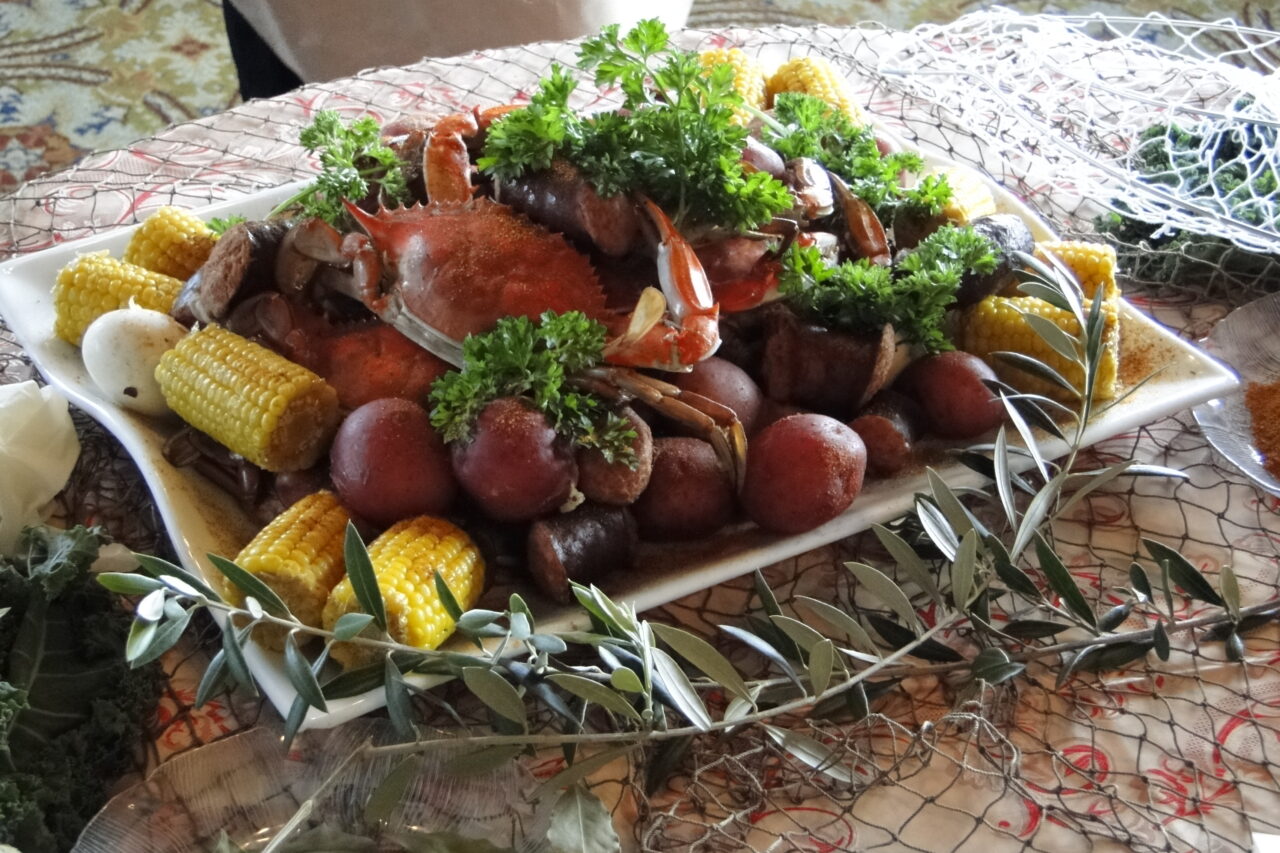
The origins of the Low Country Boil go back to the cuisine of the Gullah Geechee people of the Sea Islands along the coasts of Georgia and South Carolina. The boil was a quick and easy way to prepare a one-pot meal. It’s popular all year and is often part of Christmas celebrations.
Ingredients
- Old Bay seasoning to taste
- 5 pounds new potatoes, unpeeled
- 2 pounds cooked well seasoned herbed/garlic/smoked sausage, cut into 1 inch pieces
- 8 ears fresh corn, husks and silks removed
- 5 pounds whole crab, broken into pieces
- 4 pounds fresh shrimp, peeled and deveined
- lots of clean newspaper
- beer (lots of…)
Preparation:
- Heat a large pot of water over an outdoor cooker or medium-high heat on a stove. Add Old Bay Seasoning to taste, and bring to a boil. Add potatoes and sausage. Simmer for about 10 minutes.
- Add the corn and crab, cook for another 5 minutes.
- Add the shrimp when everything else is almost done and cook for another 3 or 4 minutes.
- Drain off the water, and empty the contents out onto a picnic table covered with newspaper.
- Grab a paper plate, a beer or sweet tea and enjoy!
Geechee Girl Rice Cafe’s Blackeye Peas and Ham
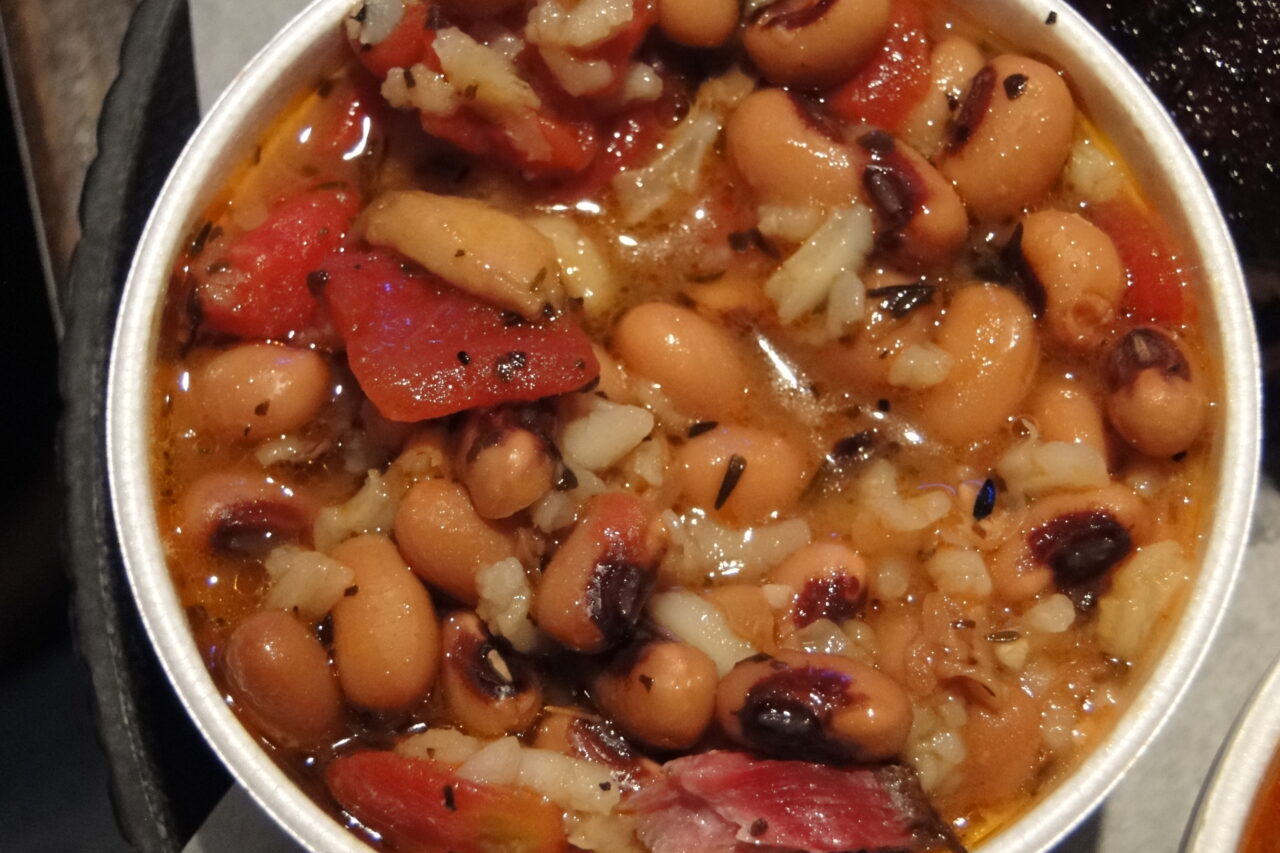
The Geechee Girl Rice Cafe for over a dozen years (2003-2014) was Philadelphia’s premiere Low Country restaurant founded by Chef Valerie Erwin and her four sisters. Chef Erwin continues her Geechee culinary influences as part of the team running Eat Cafe, part of Drexel University’s non-profit Center for Hunger-Free Communities. Chef Erwin’s savory Blackeye Peas and Ham is the Low Country in a bowl.
Ingredients: makes 3 quarts, can be frozen.
- ¼ cup. vegetable oil
- 1 pound. blackeye peas, rinsed
- 2 cups small diced onions
- 1 cup small diced carrots
- ¾ cup small diced celery
- 1½ Tablespoon dry thyme
- ¼ pound ham or ham scraps
- 2 quarts water
- 1- 2 Tablespoons salt or to taste
- 1 teaspoon fresh ground pepper
Preparation:
- Heat the oil in a pot and add the onions. Sauté for 10 minutes until lightly caramelized.
- Add the carrots and sauté for 5 minutes.
- Add the celery. Cook for two more minutes and then add the blackeye peas and the dry thyme. Stir a couple of times.
- Add the water and the ham.
- Simmer for 35-45 minutes adding more water if the peas are not covered. When the peas are tender, add the salt (amount depends on the saltiness of the ham) and the pepper. Cook for a few minutes more.
- Serve using a slotted spoon or in a bowl and garnish with chopped parsley
The King and Prince Beach and Golf Resort

It was the end of a pleasant sunny Autumn day in the quiet off-season of St. Simons Island, one of Georgia’s premiere barrier island destinations. The elegant 1935 King and Prince Beach and Golf Resort, listed on the National Historic Register and Historic Hotels of America, sets a table befitting its Old World heritage. The formal place settings with an array of flatware and crystal stemware lay on starched white linen lit by softly glowing candles.
Yet the star attraction on the menu was a classic dish served in every southern diner – a dish that owes its origins to Gullah Geechee cuisine. A dish that would bring a smile to the face of any king or prince: Shrimp and Grits in Tasso Cream Sauce.
Google any of a dozen recipes for shrimp and grits and discover everything from bullion cubes to extra sharp cheddar cheese used to mask tasteless farm raised frozen shrimp mounded on top of instant grits. Believe me I’ve had my full of disappointing versions.
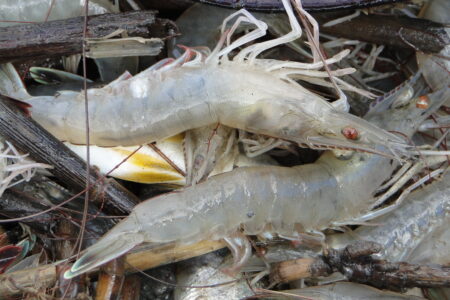
Quality ingredients are essential for a great dish and there is no comparison between farm raised and wild shrimp. Fortunately, much of America’s shrimp is wild and the package will be labeled appropriately. The high tides and lush nutrient rich salt marshes of low country and barrier islands provide an excellent clean environment for Georgia’s abundant shrimp. Georgia White Shrimp is especially plump, meaty and flavorful.
Yet the secret to this outstanding recipe is the addition of smoky, cured Tasso ham – an essential ingredient in much of Cajun and Low Country cuisine. Using this smoked delicacy gives this light cream sauce a rich flavor that lingers in the mouth.
The King and Prince Shrimp and Grits in Tasso Cream Sauce
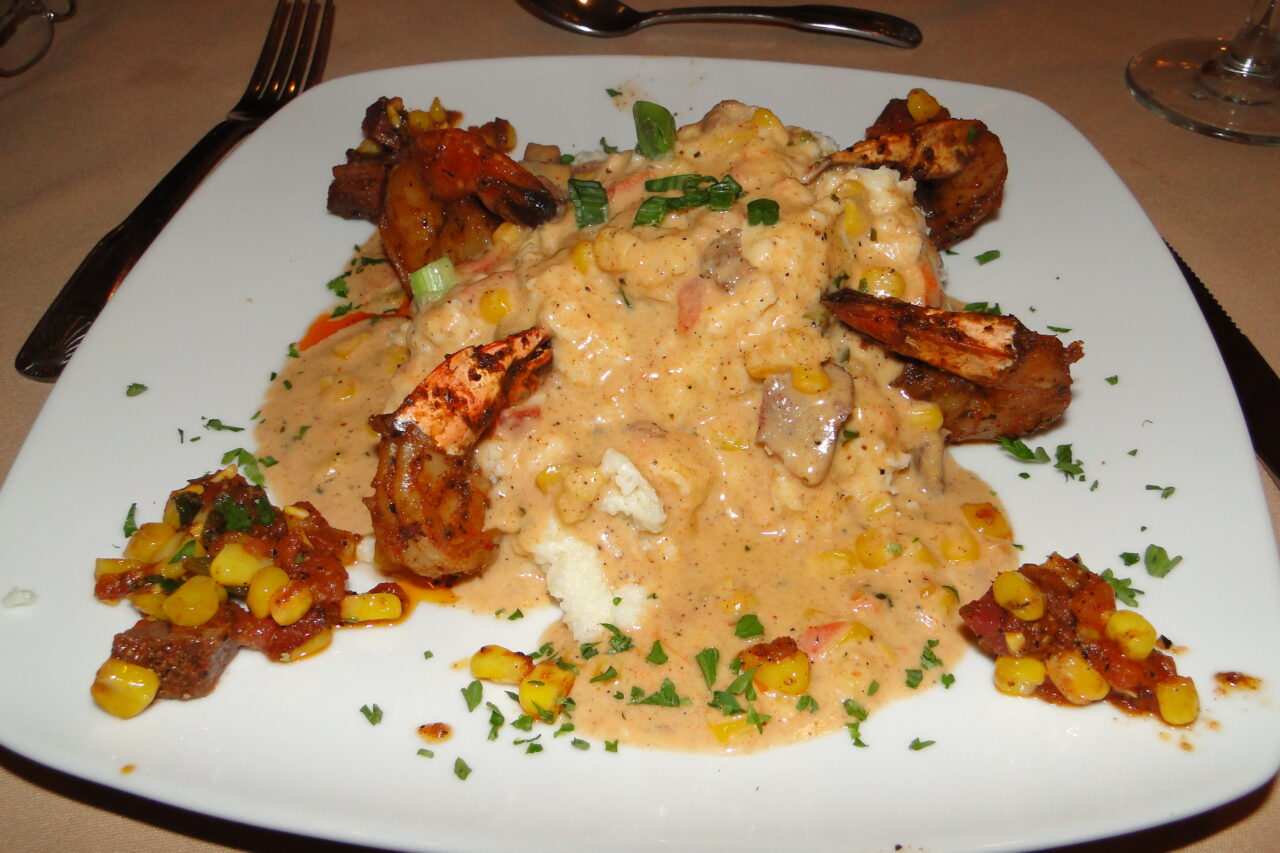
– for 2 entree or 4 small plate servings
Ingredients:
- 2 cups heavy cream
- 2/3rd cup diced Tasso ham
- ½ cup fresh (or frozen) corn kernels
- ½ cup seeded diced tomatoes
- 4 Tablespoons diced green onion
- 6 to 8 ounces of fresh large shelled wild shrimp
- 2 Tablespoons Cajun seasoning mix
- ½ cup grated asiago cheese
- salt and pepper to taste
- olive oil
- cooked grits
Preparation:
- First prepare grits using the package directions for stone ground grits but use 50/50 milk and water.
- Add just enough olive oil to lightly cover the bottom of two sauté pans and heat over medium setting.
- In one pan add the shrimp and Cajun seasoning. Sauté no more than 5 minutes. Overcooking results in tough shrimp.
- In the second pan add the ham and corn and sauté for a couple minutes. Add the tomatoes and green onions, combine and sauté a few minutes more. Add the heavy cream and asiago cheese. Bring to a simmer and cook for two minutes.
- Combine the shrimp and all the pan juices into the sauce.
- Serve over prepared grits.
Crab Boil or Boiled Peanuts, food helps define cultural identity. Whether it’s rabbit, fried turkey or lobster on the menu, as Jim Bocate’s said, “We use culture as a vehicle for mental empowerment, intellectual liberation and spiritual healing.” That sentiment, and fine ingredients, define a people’s culinary spirit.
When you go: Riceboro, Georgia, is 50 miles north of St. Simons Island off I-95 and 100 miles north of Jacksonville, FL. Brunswick Golden Isles Airport is near St. Simons Island, 40 miles south of Riceboro.
Special Thanks: the author was a guest of the King and Prince Resort and the Geechee Kunda Cultural Center. Arrangements were facilitated by Leigh Cort Publicity, Camille Ronay and Georgia Made Georgia Grown.
Travel with Pen and Palate every month to Greece and the world in the Hellenic News of America
